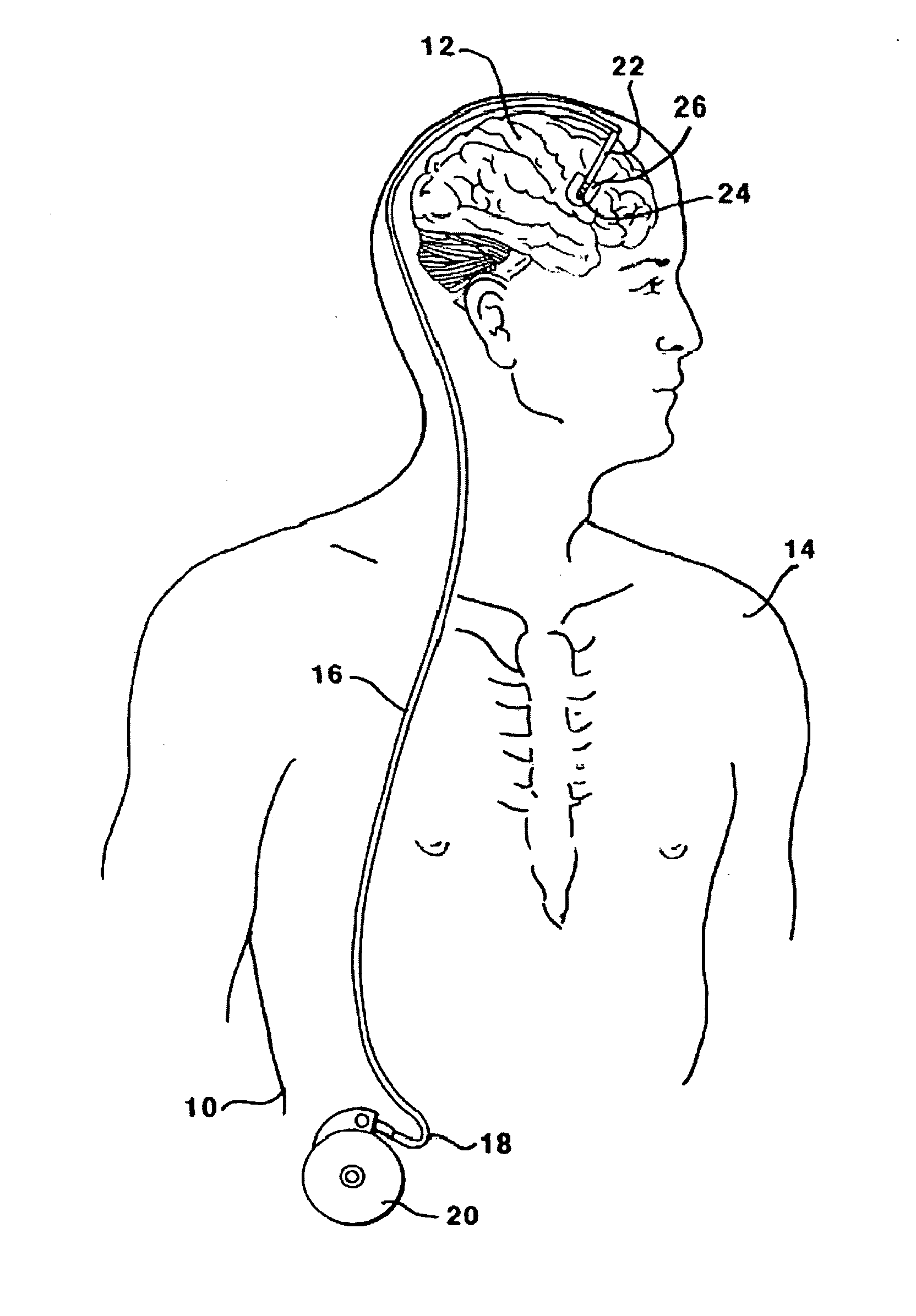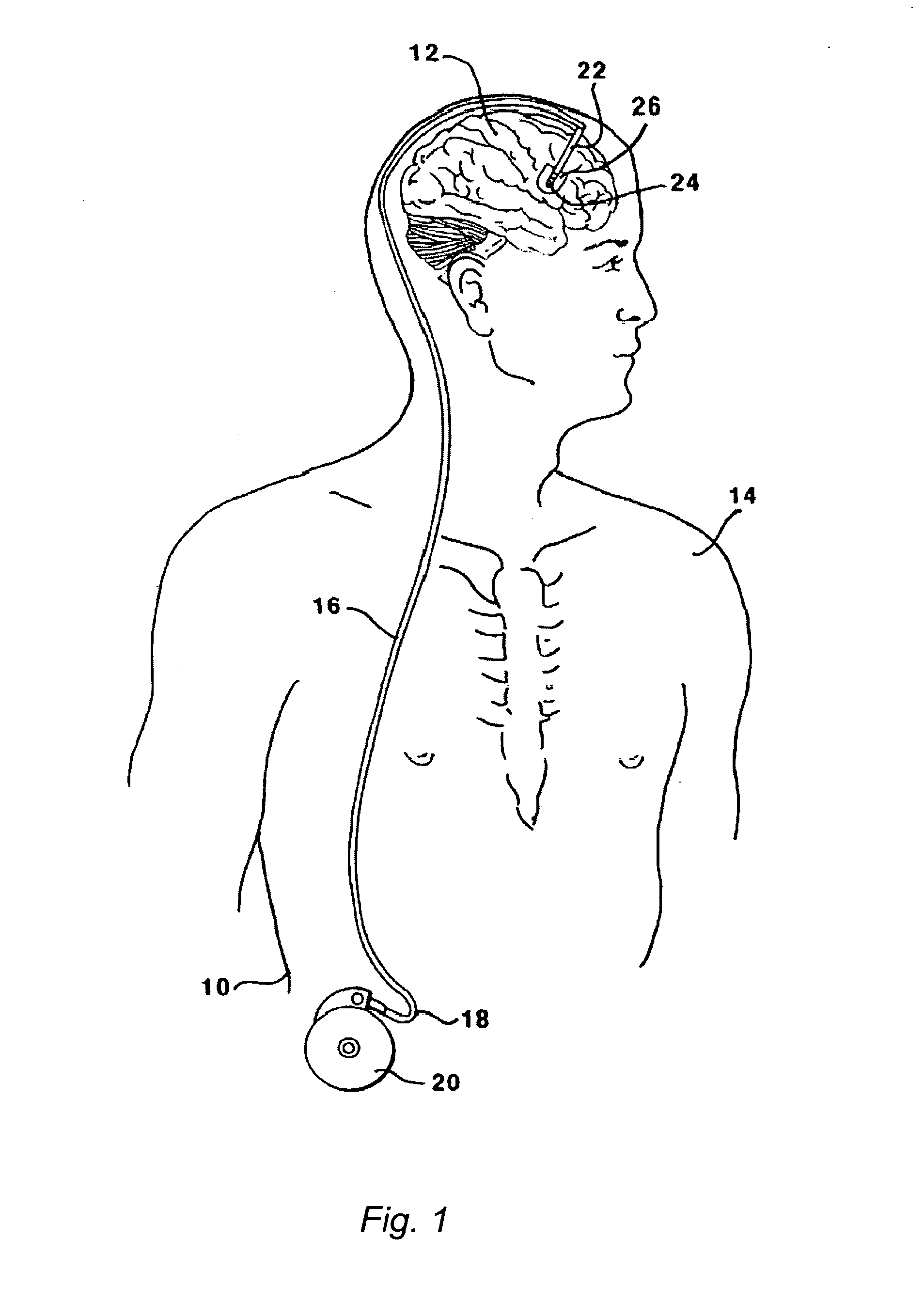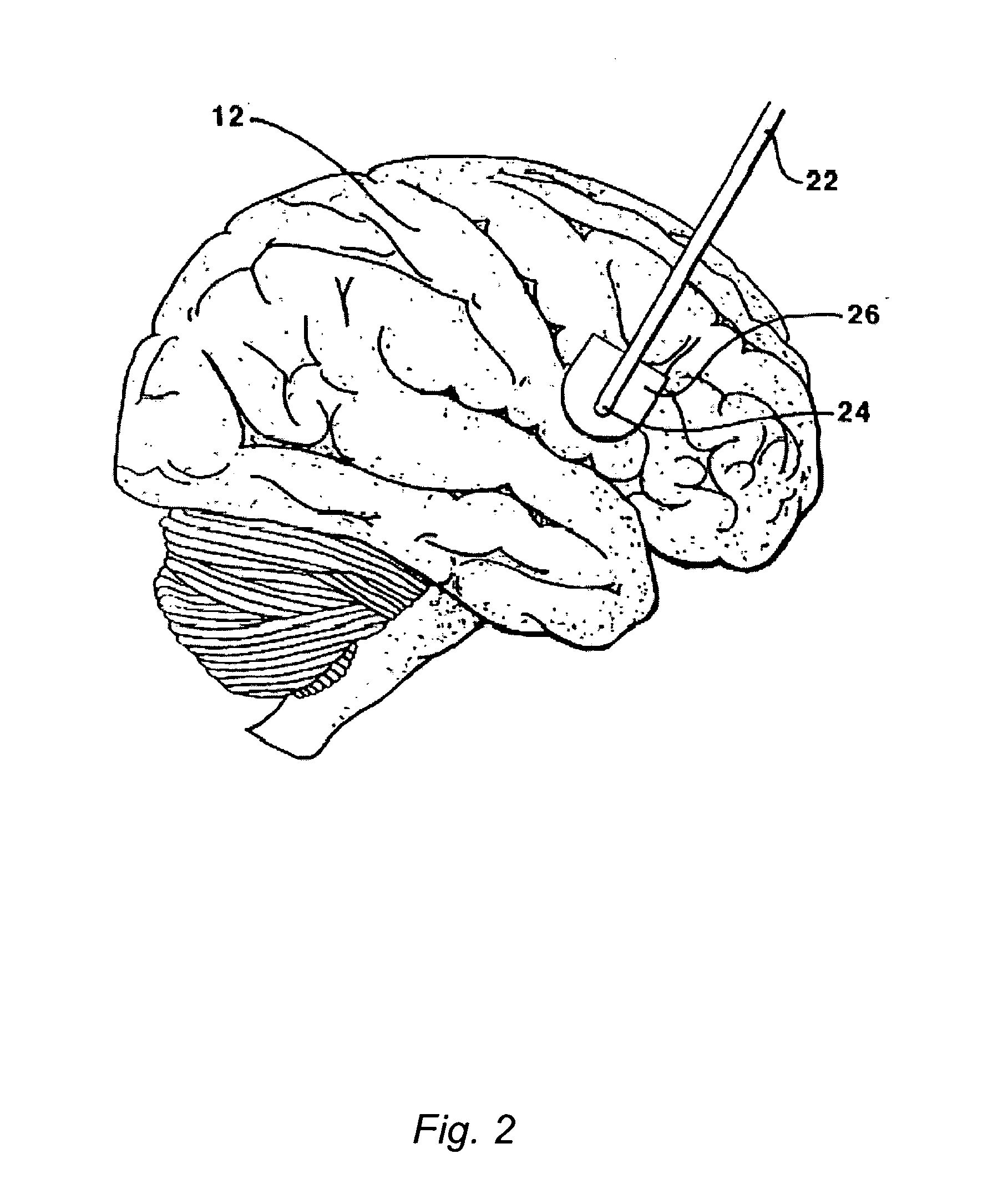Methods and Systems for Treatment of Neurological Diseases of the Central Nervous System
a central nervous system and neurological disease technology, applied in the field of systems and methods for treating neurological diseases of the central nervous system, can solve the problems of toxic accumulation of substrates at the point of blocked metabolic path, accumulation of toxic intermediates, and ineffective treatment of neurological consequences of these diseases, so as to reduce the degradation of enzymes and proteins
- Summary
- Abstract
- Description
- Claims
- Application Information
AI Technical Summary
Benefits of technology
Problems solved by technology
Method used
Image
Examples
example
[0124]This Example serves to illustrate certain exemplary embodiments of the present invention that comprise: systems providing for the chronic delivery of a therapeutic protein formulation to intraparenchymal, intracerebroventricular, and intrathecal regions of the central nervous system; and methods of using such systems for the treatment of neurological diseases / disorders of the central nervous system.
[0125]In this particular Example, the system provides treatment for Fragile X Syndrome by way of enhanced enzyme replacement therapy. Referring to FIG. 7, such a system 700 comprises: a therapeutic protein formulation 701 that in turn comprises a quantity of modified protein 702; one or more stabilization agents 703; and, optionally, one or more anti-degradation species 704; and wherein the therapeutic protein formulation provides for enhanced protein replacement therapy. System 700 further comprises a delivery system (subsystem) 705 comprising an implantable catheter 706; and impla...
PUM
| Property | Measurement | Unit |
|---|---|---|
| period of time | aaaaa | aaaaa |
| volume | aaaaa | aaaaa |
| volume | aaaaa | aaaaa |
Abstract
Description
Claims
Application Information
 Login to View More
Login to View More - R&D
- Intellectual Property
- Life Sciences
- Materials
- Tech Scout
- Unparalleled Data Quality
- Higher Quality Content
- 60% Fewer Hallucinations
Browse by: Latest US Patents, China's latest patents, Technical Efficacy Thesaurus, Application Domain, Technology Topic, Popular Technical Reports.
© 2025 PatSnap. All rights reserved.Legal|Privacy policy|Modern Slavery Act Transparency Statement|Sitemap|About US| Contact US: help@patsnap.com



